Inside the Kitchen: Food Recovery at RWU
A student led effort to combat food waste at RWU and food insecurity in the community
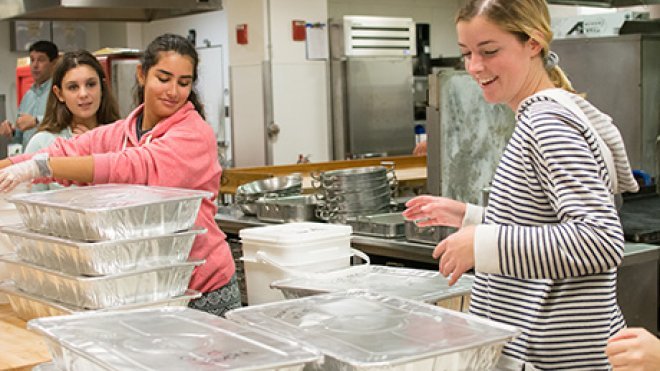
This story is part of RWU's Inside the Kitchen series going behind the scenes of RWU’s dining experience.
BRISTOL, R.I. – It looked as though they were heading in for an after-hours meal. It was just after 8 p.m. and the Upper Commons was now closed. The four students headed straight toward the line of food on display – grilled swordfish steaks from New England waters, rice pilaf, asparagus. Despite the array of food options, they had no intention of eating.
Every Monday, Wednesday and Thursday members of the RWU’s Food Recovery Network go to Upper Commons or the Baypoint Residence and Conference Center dining hall to recover perishable food that otherwise would be thrown away and donate it to local shelters. In the four years since the start of the club, which is a chapter of the national organization, it has recovered and donated over 25,000 pounds of food.
“Students do it for different reasons,” said the club’s advisor, Joshua Hennessy, café manager for RWU’s food service provider, Bon Appétit Management Company. “Students want to see people being fed. They want to offset the food insecurity system out there.”
One of those students is Bonnie McGrath, a senior public health major and co-president of RWU’s FRN. Recently, she led a group of three RWU students on their latest recovery effort.
[Video produced and edited by Lydia Nelson ‘20 and Emily Digman ’20.]
They gathered the equipment they needed, including a scale to record how much food they recovered and large aluminum containers to store it. Both are provided by the university. On average, FRN recovers at least 70 pounds of food a night. This semester alone, the club has recovered around 600 pounds.
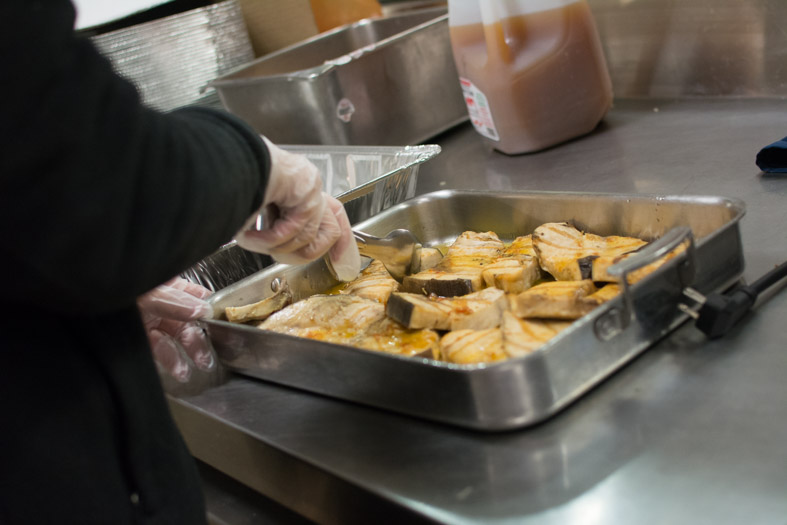
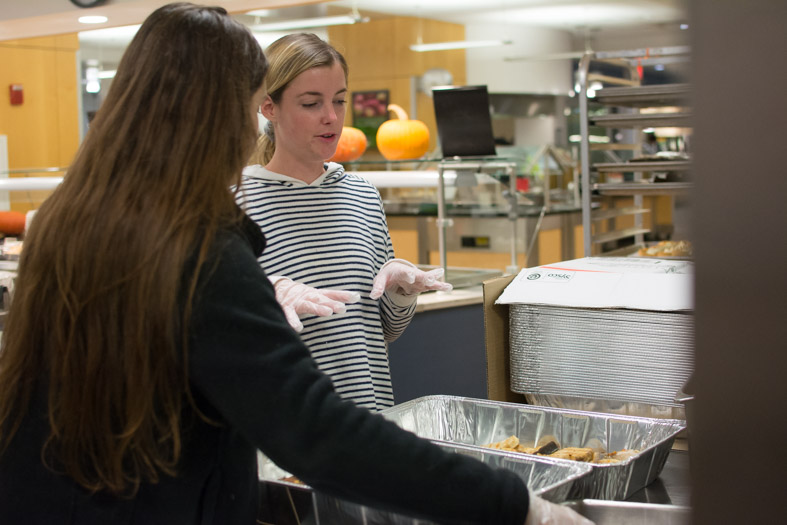
“You're solving two problems essentially at the same time,” McGrath said. “You're solving food waste in the college and you're solving people’s hunger. It kind of makes you think why hasn’t this always been a solution?”
Joining McGrath tonight was her roommate, Emma Sarno, a senior marketing major. This was her first food recovery night. “Lead the way,” she told McGrath as the group got started. Usually it takes about 30 to 40 minutes for the whole process.
The group took the food right off the service line at Classics. This food would normally be thrown away, but not tonight. This night, Hennessy brought them meatloaf. He usually brings them food from around the Commons that can’t be saved. Soon enough, the meatloaf along with some food from Classics, some pizza from the Cucina and hot dogs from the grill started to add up, so the group got more organized.
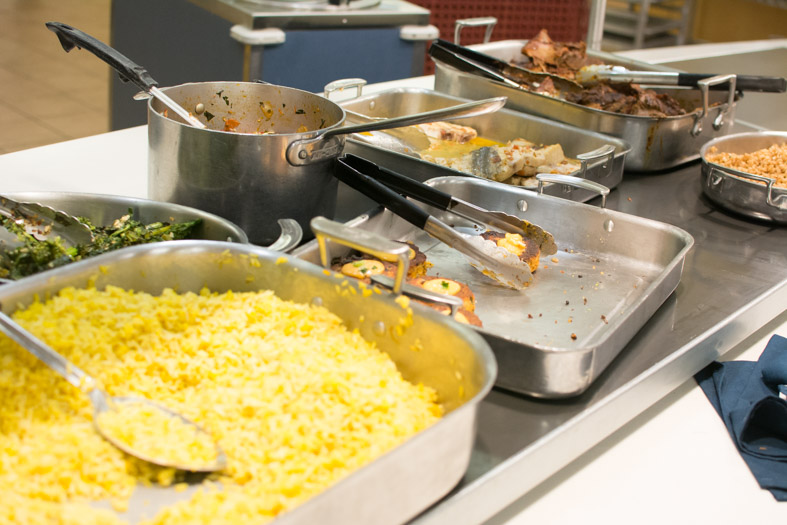
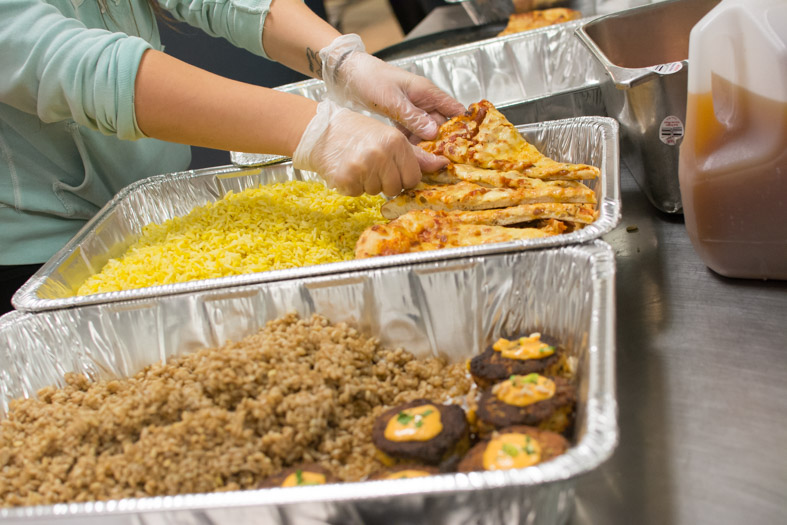
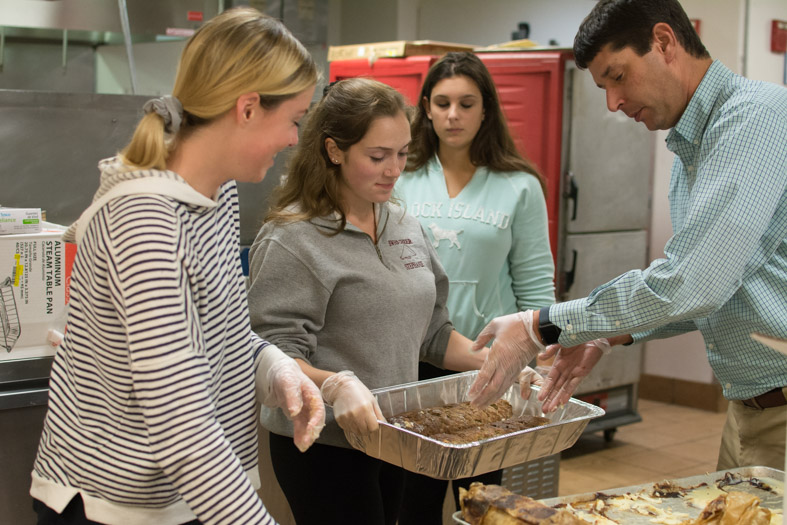
They formed an assembly line. And while the kitchen staff buzzed around them, breaking down and cleaning for the night, they divided the main tasks that go into collecting the food for recovery. Sarno along with sophomore Stephanie Dunia packaged the food into the tin containers. McGrath helped with the packaging and weighed all the food. She then brought it to another student, Katherine Castro, a junior forensic science major, who was covering and labeling all the food. Soon enough the containers started piling up.
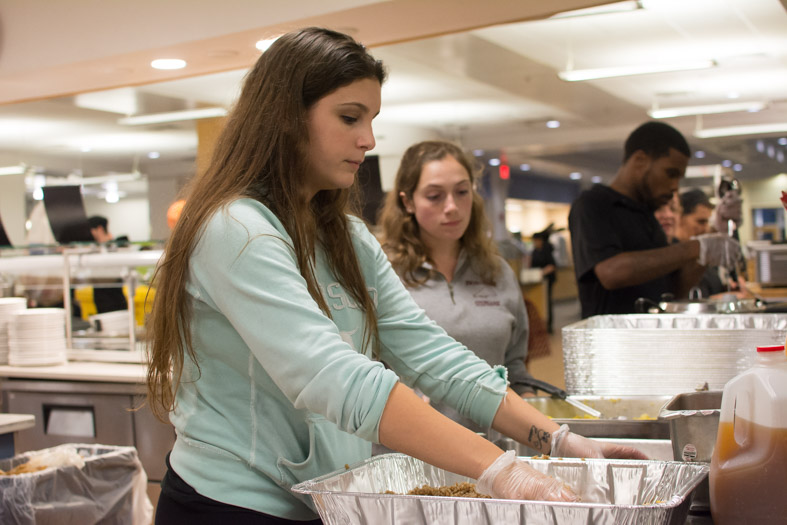
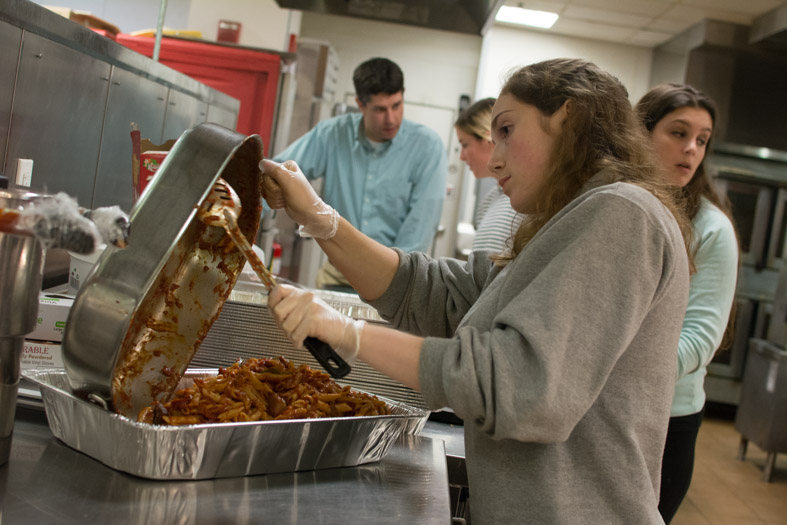
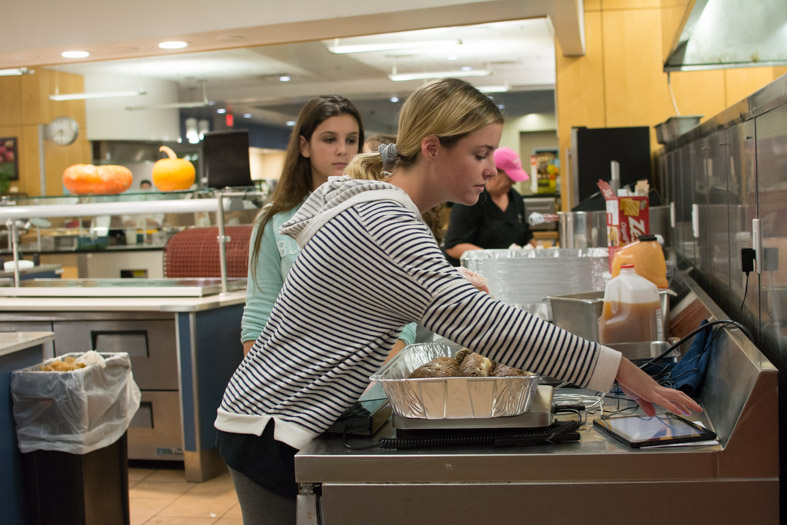
“It’s crazy how much is left,” Sarno said. After such a positive first experience, she planned on joining McGrath and the FRN team again.
“There’s been more,” said Castro, who joined FRN last year.
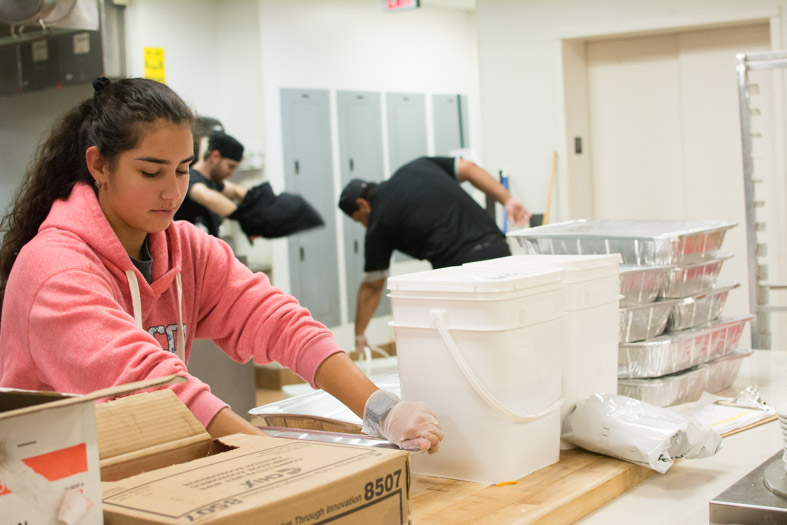
The team then cleaned and sorted the pile of containers containing the night’s recovery onto a cart and then headed down the elevator and out the door.
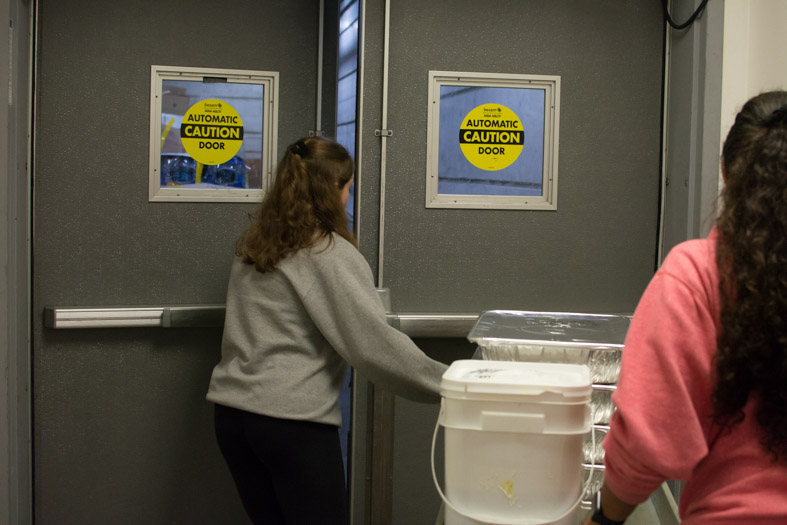
The night was almost done. The last part was the most rewarding: delivering the food to a local shelter.
In all, they had 104 pounds of food to donate.
Other Stories in this Series:
Behind the Service Line
Composting at RWU
Interesting Facts on RWU's Food
Sourced Locally: Where RWU's Food Comes From